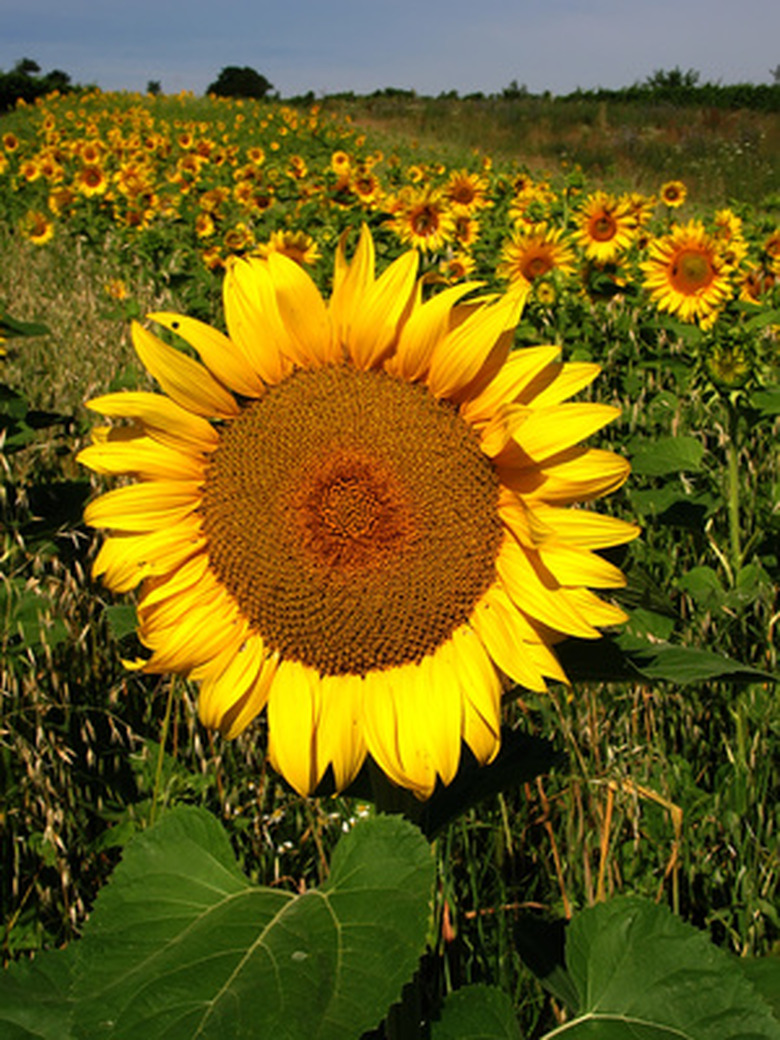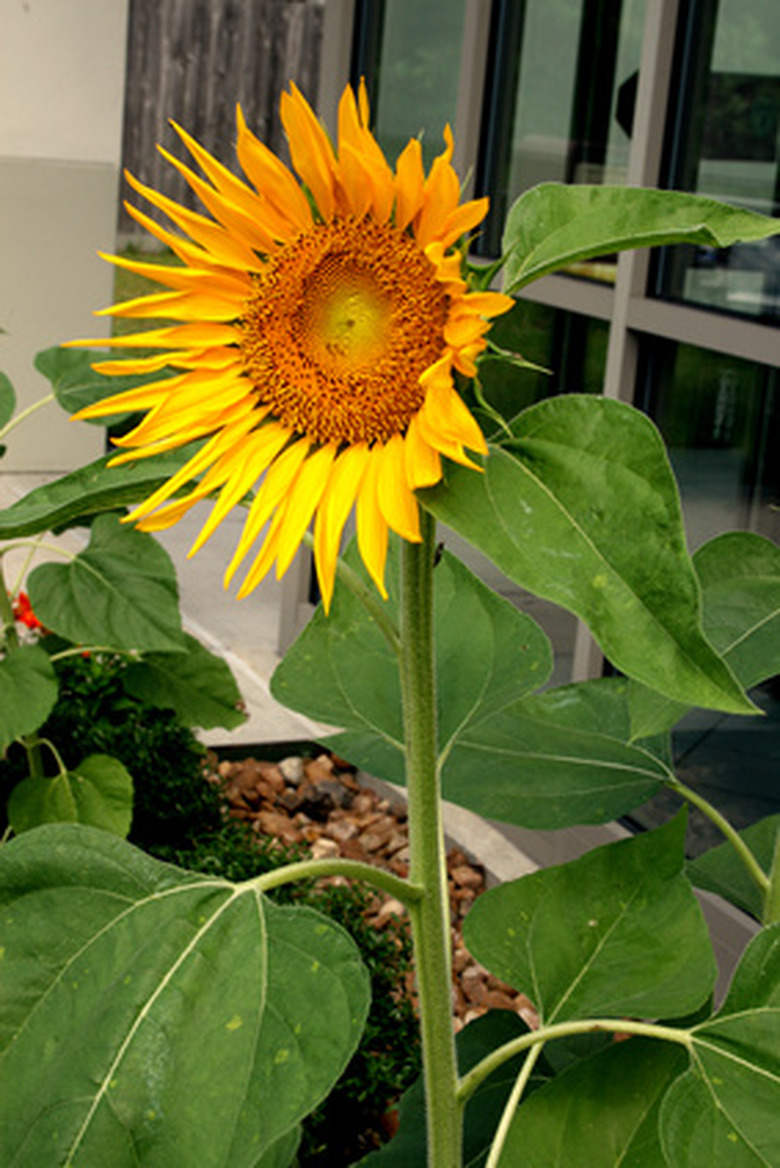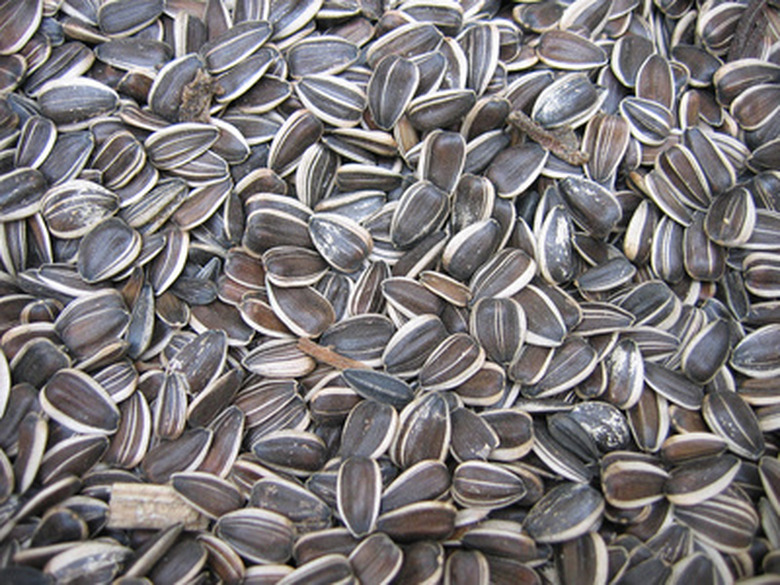How To Grow & Sell Sunflower Seeds
Things Needed
- marketing plan
- garden area or containers
- garden soil
- fertilizer
- hoe
If you're looking to learn how to grow and sell sunflower seeds, you're in luck. It turns out that it's very easy to grow them. You may find it a little harder to sell them, but who knows? This may be your ideal business.
Choose Your Market
Step 1
There are several types of sunflowers. Different varieties have different characteristics, such as size, seeds and coloring. A few varieties are Mammoth, Autumn Beauty and Ring of Fire. There are two types of commercial sunflowers: oilseed sunflowers and non-oilseed sunflowers. Oilseed sunflowers have small black seeds, which are high in oil content. They are cultivated mainly to be processed into sunflower meal and oil. Oilseed is the main sunflower seed used for bird feed. The non-oilseed sunflower has larger black and white seeds. These are commonly sold for human consumption, in the form of snacks and bread. Determine which type of sunflower seeds you intend to market. Do you want to sell sunflowers for birdseed, for human consumption (such as toasted seeds), or for their oil? Decor is another niche market. You can plant both types of sunflowers and attempt to sell to all these markets or focus solely on one.
- If you're looking to learn how to grow and sell sunflower seeds, you're in luck.
- You can plant both types of sunflowers and attempt to sell to all these markets or focus solely on one.
Develop a marketing plan beforehand. If you intend to sell to an oil processing plant, you will need to contact them to see if they are interested in buying from you. Connect with agricultural and business groups in your region. Three excellent sources for farm information are your county agricultural extension agency, the United States Department of Agriculture and university agricultural extensions.
Step 2
Growing the seeds is not difficult. Growing directions may vary a little because of the different varieties. Basically you choose a sunny location with fertile soil (if it's not fertile you will have to amend it with compost or fertilizer), place the seed into the ground and water liberally. Fortunately, sunflowers grow rapidly with little maintenance on your part, except to keep the weeds out, water and fertilize the soil.
- Develop a marketing plan beforehand.
- Fortunately, sunflowers grow rapidly with little maintenance on your part, except to keep the weeds out, water and fertilize the soil.
An easy way to insert the seed into tilled, amended soil is to simply stick your finger straight down into the dirt, then place the seed into the resulting hole. Cover the hole back up with dirt and then water the seed.
If you intend a large-scale commercial operation with huge fields, it will save you time to use heavy farm equipment, such as tractors with discs for tilling the fields and a planter to insert the seeds into the ground.
Step 3
Harvest the sunflower heads when the plants are mature. Signs of maturity include the back turning brown and petals drying and falling off. Before the seeds dry and fall out of the head (or the birds pick them to pieces), harvest them by cutting the stem. Leave about one foot of stem attached to the seed head. Rub the seeds out of the head using your hands. Dry them if they are wet. Store the seeds in a dry place.
- An easy way to insert the seed into tilled, amended soil is to simply stick your finger straight down into the dirt, then place the seed into the resulting hole.
- Before the seeds dry and fall out of the head (or the birds pick them to pieces), harvest them by cutting the stem.
Step 4
Implement your marketing plan. Now is the time to take those seeds to market, whichever market it is. Follow any guidelines given to you by your county extension agency and local agricultural associations. The U.S. Food and Drug Administration has specific guidelines to follow governing the growing and selling of foods. The National Sunflower Association is a non-profit organization that offers an abundance of information on planting, harvesting and marketing sunflowers.




